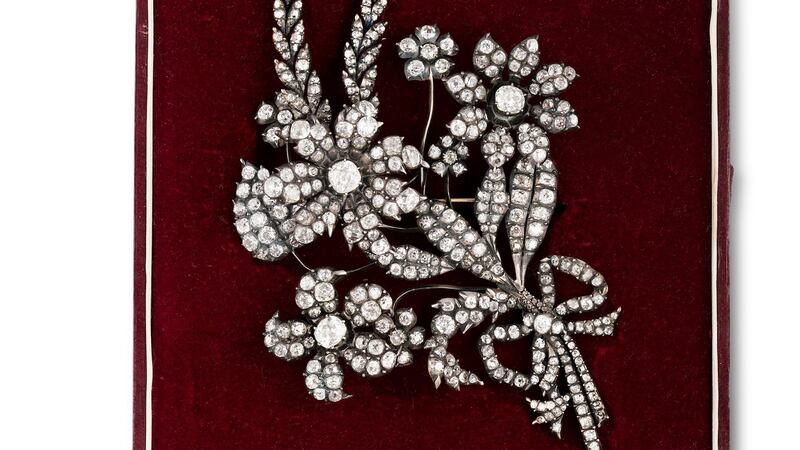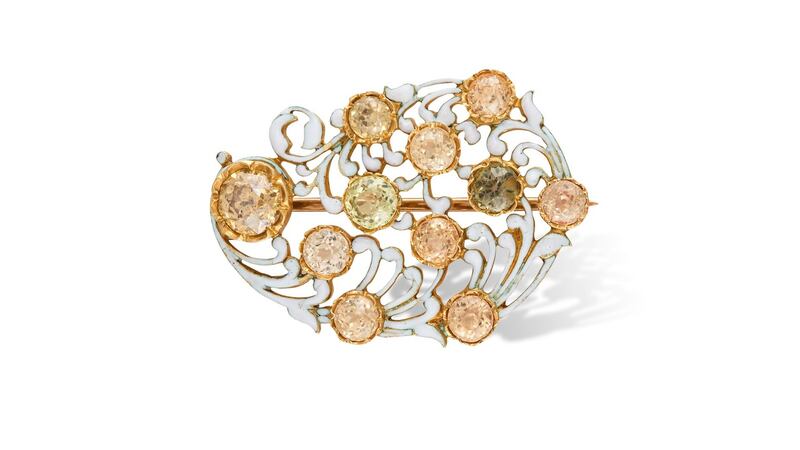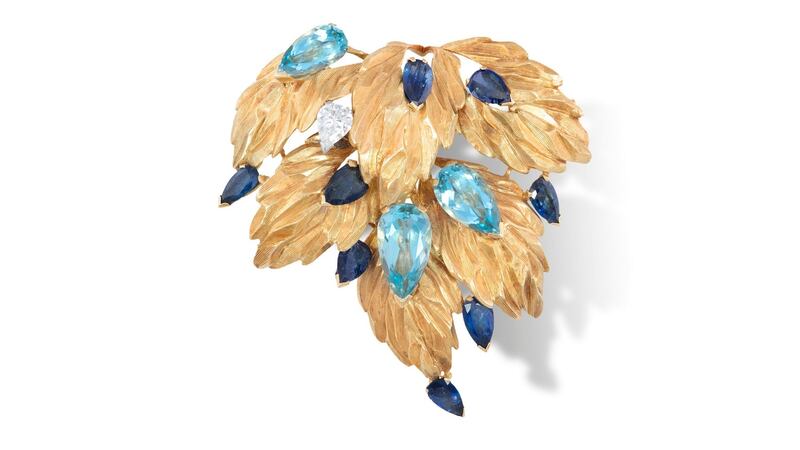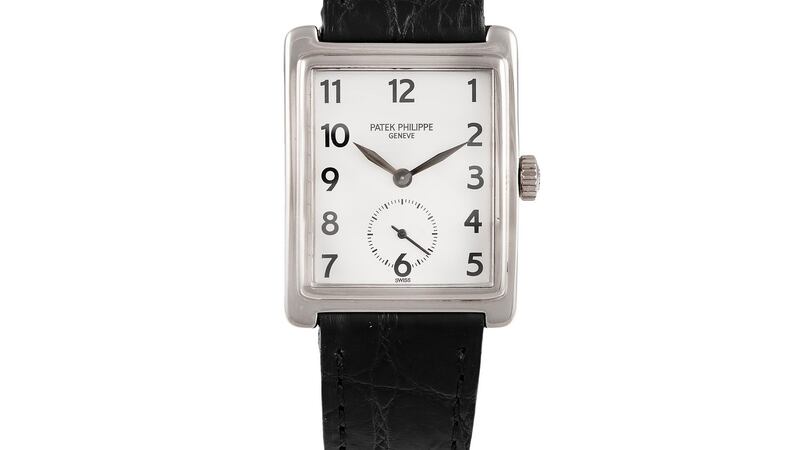As autumn draws in flowers gradually disappear from the garden; so the bijou blooms which sparkle throughout the catalogue for the forthcoming sale of fine jewellery at Adam’s on St Stephen’s Green in Dublin are particularly welcome.
Floral motifs have been a recurring theme in jewellery for centuries. Besides the traditional symbolism of certain plants – roses for love, forget-me-nots for remembrance, tulips for passion – the language of flowers offers the most accomplished designers and craftspeople the opportunity to show off their skills. Yet the making of the jewellery known as “en tremblant” takes the imitation of nature to another level entirely. The term means “trembling”, and as the name suggests it began in the jewellery ateliers of Paris. Individual elements of the piece would be mounted or fixed via a series of coiled wire or gold springs, leaving it in constant gentle motion.
The vogue for “en tremblant” jewellery quickly spread to England, where botany was becoming hugely fashionable as new species from all over the British empire were being brought back by explorers and military travellers. Horticulture and botanical drawing were regarded as suitable occupations for aristocratic young women, and fresh flowers often used as an accessory, or “corsage”, in costumes of the period.

The Adam’s sale includes a single collection of 18th- and 19th-century pieces (Lots 110-121) which contains a number of exquisite examples of this technique. “The feature,” writes Adam’s head of jewellery Claire-Laurence Mestrallet in the auction catalogue, “was used to highlight individual elements of the bouquet – a single flower head seeming to quiver and shake in the breeze.”
‘En tremblant’
A corsage ornament from 1880, Lot 117 (€4,000-€6,000), is an elegant spray of cushion and rose-cut diamonds set in silver and gold. Both flowers and foliage are mounted “en tremblant”, and the whole piece measures 26cms, though it can also be detached into smaller parts.
With three principal diamonds of one carat apiece and the remainder adding up to nearly 30 carats, Lot 121 (€20,000-€30,000) takes the form of a living, breathing miniature bouquet tied with a carefree diamond bow.

Lot 120 (€4,000-€6,000), a spray with diamonds of approximately 6.50 carats in total, has French assay marks and a maker’s mark “AF”, indicating that it may have been made by the Parisian jeweller Alphonse Fouquet.
For those who like their jewels to shimmer rather than tremble, Lot 60 (€5,000-€6,000) is a pair of ruby and diamond earclips, the clusters of three rubies suggesting a ripe autumn fruit, each tied in a round and baguette-cut diamond tied ribbon.
Lot 58 (€6,000-€8,000) is a 1950s “cascade” brooch, its eight carats of diamonds designed to suggest the ceaseless flow of a waterfall while staying firmly in place.

The return of the brooch as a major fashion statement is long overdue, and this sale contains a number of glorious examples, from the highly collectible openwork piece in art nouveau-style by Tiffany (Lot 46, €1,500-€2,000) to the pear-shaped aquamarine, sapphire and diamond brooch by Andrew Grima (Lot 62, €2,500-€3,500), which comes with a royal nod of approval: Queen Elizabeth regularly wears a comparable piece by the same designer. While Lot 127 (€3,800-€4,200) is a contemporary stylised diamond feather brooch mounted in gold and light-as-a-feather titanium, Lot 19 (€600-€800) is the oldest piece in the sale. A 17th-century Portuguese brooch/pendant of open foliate design, it’s part of a collection of rare Spanish antique jewellery which also includes a late 18th-century diamond necklace (Lot 20, €3,000-€4,000) and two pairs of 18th-century pendant earrings (Lot 21, €800-€1,200 and Lot 22, €500-€700).
Bracelet watch
The auction also includes a number of high-end watches at modest prices. Of these the show-stoppers are two gents’ watches by Patek Philippe: Lot 89 (€5,000-€7,000), an 18-carat gold Calatrava bracelet watch with white enamel dial, Roman numerals and feuille hands; and Lot 93 (€6,500-€8,500), a “Gondolo” with a square white face on a black leather strap, the case in 18-carat white gold.

The sale has pieces to suit all budgets, from a couple of hundred euro to the most expensive item in the catalogue, Lot 61 (€120,000-€180,000), a diamond riviere necklace by Mauboussin from the mid-1950s. It is listed as “the property of a continental lady”, and boasts a whopping 53 carats of diamonds.
And the cutest piece? No contest. That would be Lot 66 (€800-€1,200), a Kutchinsky brooch in the form of a fluffy duck.
As for the most desirable of the jewels on offer, Margherita Burgener’s tourmaline and diamond dress ring, designed as a flower with a cabochon green tourmaline surrounded by purple titanium petals, (Lot 190, €2,000-€3,000) would have to be near the top of the list. If flowers can speak, this one is saying something exotic, flamboyant and – just possibly – dangerous.
Adam’s, 26 St Stephen’s Green, Dublin 2. Fine Jewellery & Watches, September 18th, 6pm. adams.ie















